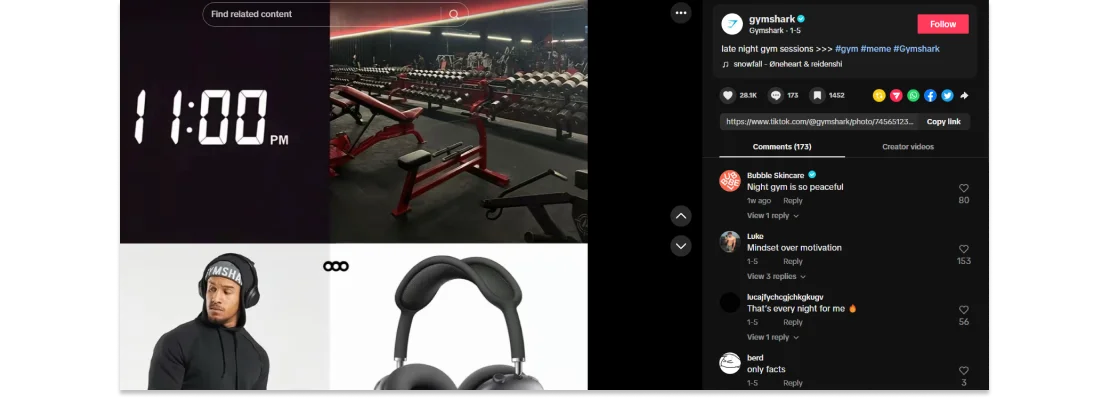
Social media marketing continues to evolve, shaping how businesses connect with audiences, build brand loyalty, and drive revenue. As we head into 2025, it’s clear that mastering this digital frontier isn’t optional—it’s a necessity for businesses of all sizes. From TikTok’s viral potential to Instagram’s polished aesthetic, social platforms are the epicenter of eCommerce growth.
This guide will break down why social media marketing is indispensable in 2025, explore emerging trends, and provide actionable strategies to help your business thrive in this competitive landscape. Whether you’re a small eCommerce store or an established brand, these insights will help you turn social media into a powerhouse for your digital marketing efforts.
The Role of Social Media Marketing in 2025
Brand Visibility in a Crowded Digital Landscape
Social media platforms provide an unparalleled opportunity for businesses to showcase their products and services. With billions of active users across platforms like Instagram, TikTok, and Facebook, brands can reach global audiences in a way traditional brand advertising could never achieve.
For example, platforms like TikTok allow small brands to go viral overnight, while Instagram helps maintain a polished and curated brand presence. The ability to consistently stay in front of your audience ensures your business remains top-of-mind.
Building Trust and Authentic Connections

One of the unique advantages of social media is the ability to foster authentic interactions with customers. Whether it’s replying to a comment, hosting a live Q&A, or showcasing behind-the-scenes footage, these efforts create transparency and humanize your brand. Building customer trust is invaluable in eCommerce, and social media serves as the foundation for cultivating it.
Real-Time Adaptability
The fast-paced nature of social platforms allows businesses to capitalize on real-time trends. Whether it’s a viral TikTok challenge or a trending hashtag, brands that adapt quickly can capture audience attention and generate buzz. Social media’s agility makes it a critical tool for businesses navigating the dynamic eCommerce environment.
Key Trends Shaping Social Media Marketing in 2025
The Domination of Short-Form Video
Short-form video content continues to captivate audiences. TikTok, Instagram Reels, and YouTube Shorts are redefining how brands communicate their message. These bite-sized videos are designed to entertain, educate, or inspire, often leading to higher user engagement and conversion rates.
For instance, brands like Gymshark have successfully used TikTok’s short-form content format to connect with younger audiences through fitness challenges and relatable content.
The Integration of Artificial Intelligence
AI is now a cornerstone of social media marketing, driving everything from content creation to audience targeting. Tools like ChatGPT and Canva simplify the creative process, while AI-driven analytics platforms like Google Analytics provide real-time insights into audience behavior. Predictive algorithms ensure your content reaches the right people at the right time.
AI chatbots are also enhancing customer service on platforms like Facebook Messenger, offering 24/7 support to answer questions, resolve issues, and guide users toward purchases.
Social Commerce
The ability to shop directly on platforms like Instagram Shopping, TikTok Shop, and Pinterest is transforming the customer journey. Social commerce shortens the sales funnel, allowing customers to discover, evaluate, and purchase products without leaving their favorite platform.
Brands investing in shoppable posts, live-stream shopping events, and interactive ads are seeing significant returns. For example, Sephora has successfully leveraged Instagram Shopping to connect customers directly with their products.
Building a Social Media Strategy for 2025
Identifying Your Ideal Platforms
Not all platforms are created equal. TikTok is ideal for businesses targeting Gen Z and younger Millennials, while LinkedIn is a powerhouse for B2B marketing. Analyze where your audience spends the most time and focus your efforts on those platforms.
Creating Value-Driven Content
Social media users want digital content that entertains, educates, or inspires. Invest in high-quality visuals, engaging captions, and creative formats to capture attention. Incorporate user-generated content to foster authenticity and trust.
Harnessing Paid Advertising
Organic reach is limited on many platforms, making paid advertising a necessity. Use highly targeted ads to reach specific audience segments, promote product launches, and boost visibility. Platforms like Facebook and Instagram offer robust ad tools to help businesses maximize ROI.
Emphasizing Consistency and Engagement
Consistency is key. Develop a content calendar to ensure regular posting and maintain a cohesive brand voice across all platforms. Engage with your audience through comments, polls, and direct messages to create meaningful interactions.
Tools to Maximize Social Media Efforts
Social Media Management Tools
Platforms like Hootsuit and Buffer streamline scheduling, monitoring, and analyzing your social campaigns, saving time and effort.
AI-Powered Tools
Jasper, Canva, and ChatGPT are invaluable for generating content ideas, creating visuals, and automating processes. These tools enable businesses to stay creative and efficient.
Analytics Platforms
Google Analytics, Sprout Social, and SEMrush provide in-depth performance insights, helping businesses refine their strategies and improve outcomes.
 SEMRush
SEMRush
Real-World Examples of Success
Duolingo’s TikTok Domination
Duolingo has become a household name on TikTok, leveraging humor and pop culture references to engage audiences. Their consistent presence and relatable content have turned them into a social media icon.
Sephora’s Instagram Shopping
Sephora integrates shoppable posts and influencer campaigns seamlessly into its Instagram strategy, allowing users to browse and purchase products directly. This approach has driven higher conversion rates and brand loyalty.
Nike’s Storytelling on Instagram
Nike uses Instagram Stories to share inspirational narratives and behind-the-scenes looks, building emotional connections with its audience.
Looking Ahead: What’s Next for Social Media Marketing?
The future of eCommerce social media marketing will be driven by voice search optimization and AI-driven personalization, enabling businesses to deliver tailored and accessible experiences. These technologies will help brands connect more meaningfully with their audiences by addressing individual preferences and needs.
Emerging platforms and features will create new opportunities for engagement, challenging established players. Meanwhile, growing demand for sustainability and ethical practices will push brands to prioritize transparency, with socially responsible companies gaining a competitive edge in the digital marketplace.
Conclusion
Social media isn’t just a marketing tool—it’s the cornerstone of modern business strategy. By understanding trends, leveraging innovative tools, and creating value-driven content, you can ensure your brand thrives in the competitive landscape of 2025.
The time to act is now. Build a strategy that aligns with your goals, invest in the right platforms, and engage meaningfully with your audience. Social media marketing has the power to transform your brand—embrace it and lead the way.

 Eashan Mehta
Eashan Mehta






